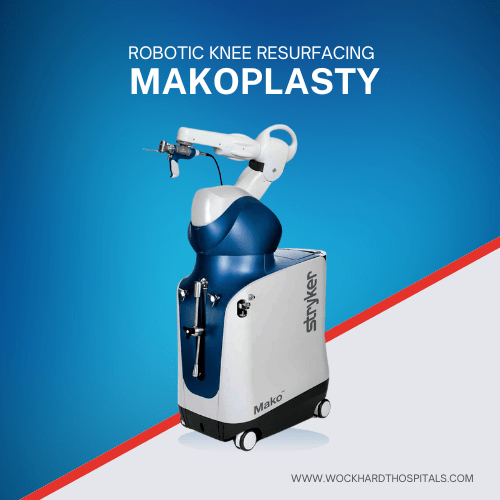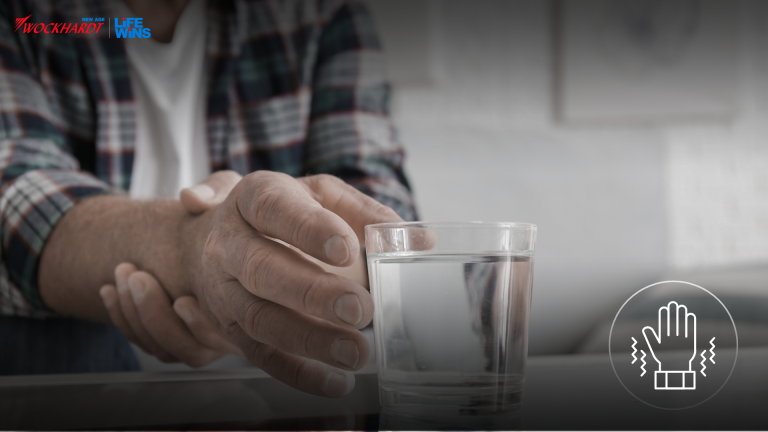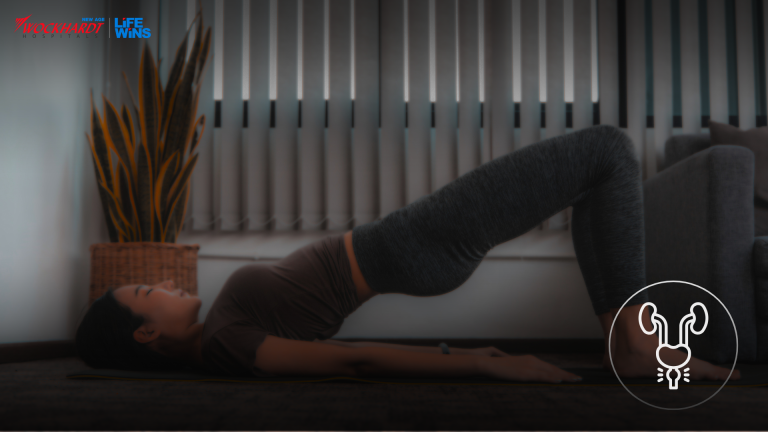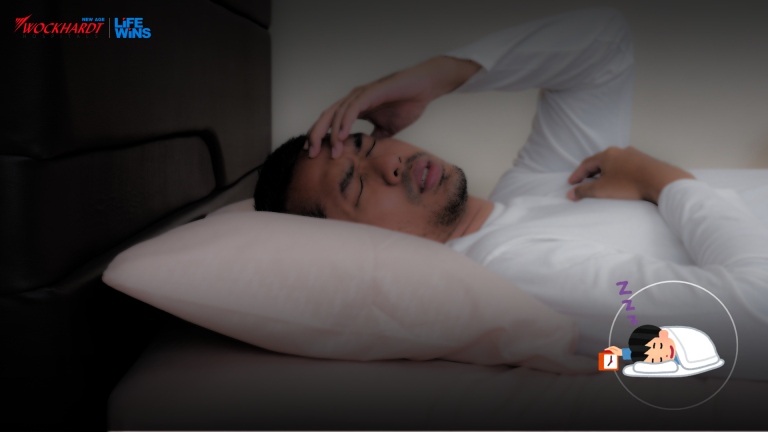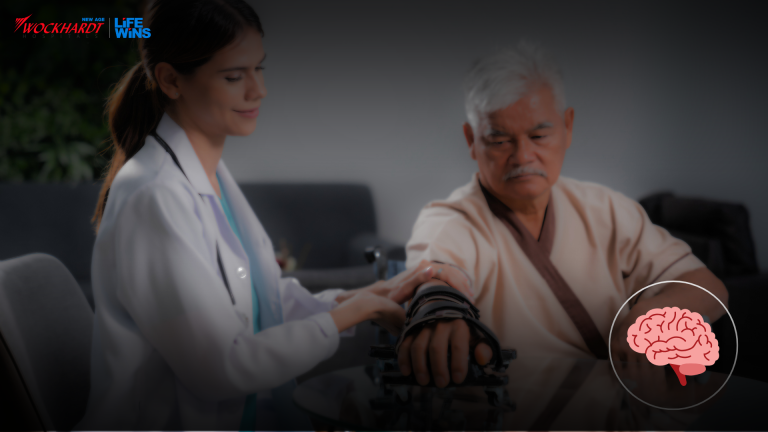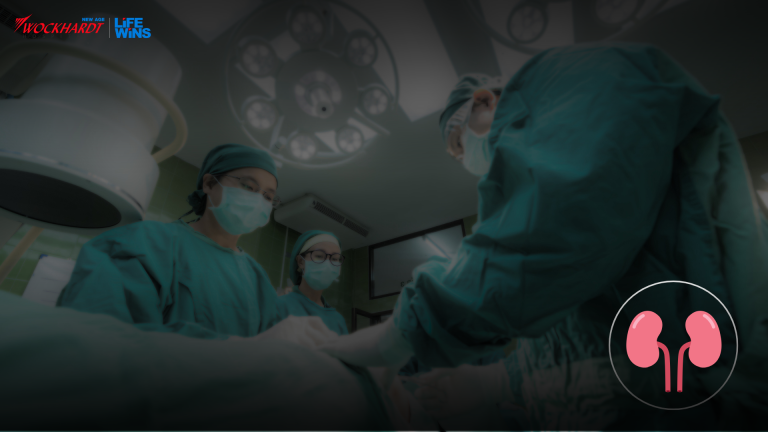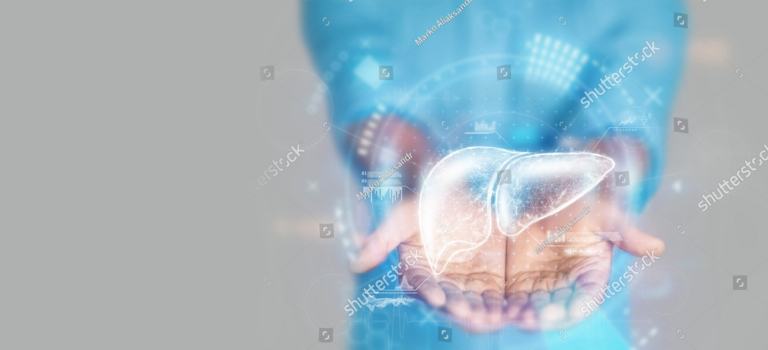Are you Eating too Much Sugar? Here are 20 Signs to Look out For

Are you one of those who cannot miss a day without a dessert or a sweet at the end of every meal? After all, who doesn’t love eating mithai or a dessert? Although there is no harm in enjoying these treats once in a while, it’s no good if it becomes a habit. Chances are you already know that eating too much sugar isn’t good for you. Yet you’re probably still overdoing it. Sugar is delicious but because life is unfair sometimes, high sugar intake is bad for your health. According to a study published in the journal Nature Communications, consuming a diet high in sugar might prevent the proper functioning of people’s immune systems. And a weak immune system is followed by an unhealthy body which can cause various health issues. Here’s How High Sugar Intake Affect your Health If you have a sweet tooth, it is time you control your cravings. Otherwise, it can put you at increased risk of several health diseases. According to Dr. Pritam Moon, a consultant physician, Wockhardt Hospital, Mumbai, “Too much sugar can lead to fat accumulation that can make you pile up those excess kilos, and fatty liver disease, type 2 diabetes. This can further double the chances of heart problems. Moreover, remember that obesity also raises your risk of cancer.” He adds, “Not only this, but too much sugar can also lead to high blood pressure and increase inflammation in the body. Poor diet choices can invite skin problems like wrinkles and speed up your aging process. The collagen and elastin of the skin tend to get damaged, and it tends to sag and becomes loose. Too much sugar can lead to low energy. Eating too much sugar can spoil your teeth as you may get cavities, gum problems and it can even decline your cognitive health. You will be unable to focus and there will be memory loss too.” So, how would you know that you are eating too much sugar? Here are 20 Signs you’re Eating too Much Sugar 1. High Blood Pressure Your blood pressure is considered normal if it is 120/80 or lower. Not just salt, sugar can spike your blood pressure as well. According to a research review published in the BMJ journal Open Heart, limiting sugar intake is more important than reducing sodium injection when it comes to healthy blood pressure. 2. Weight Gain Excess sugar is excess calories and since it has no protein or fiber it doesn’t feel you up also. Also, high levels of sugar increase the production of insulin that stores excess fat in your belly rather than in some other places. 3. Low Energy Level An increased level of sugar in your diet can drop your energy level because most sugar-rich foods are nutrition deficient. 4. Acne If you are battling acne, wrinkles, and other skin problems it may be worthwhile to consider how much added sugar you are eating. High sugar intake triggers the secretion of androgen which results in acne. 5. More Cravings for Sweet This happens because sugary foods are addictive so the more sugar you eat the more you will crave it. 6. Irritability High sugar intake affects blood sugar levels. Fluctuations in blood sugar levels can result in rapid mood changes including low mood and irritability and mental status. 7. Joint Pain Some studies have linked regularly having high sugar intake to arthritis in women possibly due to inflammation. So the joint pain is also one of the side effects of consuming high sugar. 8. Sleep Issues Eating sugar food, especially at night, could lead to a rush of energy at a time when we should focus on slowing down and preparing the body to rest. According to a study published in August 2019 in the American Journal of Lifestyle Medicine, poor sleep quality is significantly related to higher consumptions of added sugars. 9. Frequent Fatigue Sugar delivers a rapid energy boost, but its effects are temporary. The resulting energy fall can leave you permanently fatigued. 9. Tooth Decay Sugary meals feed harmful oral bacteria, causing cavities and other tooth problems. 10. Frequent Colds and Flu High sugar consumption can weaken the immune system, increasing the risk of colds and flu. 11. Brain Fog Overconsumption of sugar can cause cognitive impairments such as forgetfulness or difficulties concentrating. 12. Digestive Problems A high sugar diet can disturb gut flora equilibrium, causing bloating, gas, and constipation. 13. Increased Thirst and Urination High sugar intake can cause thirst and frequent urination, which are early indicators of insulin resistance. 14. Dry Skin Sugar can cause persistent dry skin, even with proper hydration. 15. Blurred Vision High blood sugar levels may cause temporary vision abnormalities. 16. Chronic Sinusitis Excess sugar consumption might cause chronic sinusitis and make you more susceptible to allergies. 17. Hormonal Imbalances Sugar can disturb hormonal balance, causing illnesses like PCOS in women. 18. Reduced Immunity A sugar-rich diet can weaken the immune system, making it more susceptible to diseases. 19. Increased Heart Rate Sudden blood sugar rises might cause palpitations and elevated heart rate. 20. Numbness in Extremities Excess sugar consumption can cause neuropathy, a disorder characterized by numbness or tingling in the extremities. Tips to Cut Down on Sugar from the Daily Diet So ladies, listen to the doctor’s advice and stay healthy. Source: https://www.healthshots.com/healthy-eating/nutrition/nutrition-week-2021-8-signs-that-you-are-eating-too-much-sugar/ FAQs on Symptoms of too Much Sugar in your Body Q. What is free sugar intake? “Free sugar intake” includes naturally occurring sugars found in honey, syrups, fruit juices, and fruit concentrates, as well as added sugars to food and drink during processing, cooking, or serving. Naturally occurring sugars found in entire fruits, vegetables, and dairy products are not included. Sustaining a balanced diet and avoiding the many health problems linked to high sugar intake require careful monitoring of one’s free sugar intake. Q. How much sugar per day is okay? The World Health Organization (WHO) recommends limiting free sugar intake to less than 10% of total daily calories, ideally less than 5%, for added health advantages. However, the recommended daily sugar intake varies by age, sex, and general health. For people, this usually equates to around 25 grams (6 teaspoons) of additional sugar per day. Q. Does overeating sugar cause diabetes? Although overeating sugar doesn’t cause diabetes directly, overindulging in sugar can eventually lead to weight gain and insulin resistance, which can exacerbate type 2 diabetes. Increased risk of obesity and other metabolic disorders—major risk factors for type 2 diabetes—comes from a diet heavy in added sugars. Q. What does high sugar feel like? Excessive blood sugar
Diet and Nutritional tips to stay healthy in the monsoon season

The monsoon season is a welcome change after 3-4 months of scorching summer heat. However, while monsoon offers respite from the heat, it comes with its share of health risks. The damp & filthy conditions in the monsoon play a host for many disease-causing germs, which cause some serious health attacks like dengue, malaria, conjunctivitis, typhoid, viral fever, GI disturbances, etc. In today’s time, it is not just the monsoon that should be concerning but also the novel virus which has been plaguing the world. Hence the ideal thing to do would be to enhance one’s own lifestyle & boost the immune system. Healthy Diet Regime for Monsoon Enjoy the rainy season for as long as it lasts. Eat healthy to make sure a stomach infection or food poisoning doesn’t spoil the monsoon season for you. Avoid eating stale or roadside food. Have a healthy & safe monsoon. Mrs.Swati AwasthiChief Dietician & Nutritionist
Patient talks to the surgeon during rare brain surgery performed at Wockhardt Hospital, Nagpur
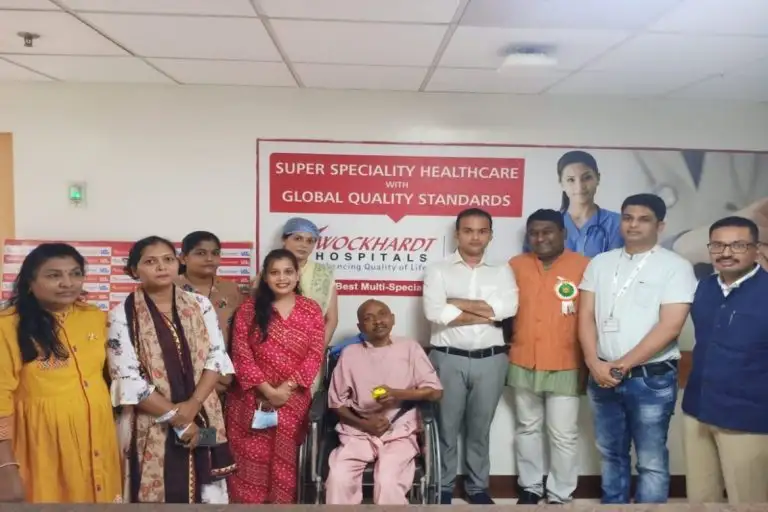
Imagine being able to talk to your doctors during brain surgery without pain and give them immediate feedback if you feel any problem while they operate. That’s exactly what happens during an awake craniotomy or awake brain surgery. This high-end case was recently performed at Wockhardt Hospitals in Nagpur. This highly specialized surgical procedure requires a team approach led by a neurosurgeon and a neuroanesthesiologist which was performed by Dr. Rahul Zamad, Neuro Surgeon and Awantika Jaiswal, Neuroanesthesiologist. “The main goal in such surgery is to remove as much of the tumor as can be removed, in the safest possible way. When a tumor is near an area of the brain that controls critical functions — such as speech, language, or movement — an awake cranioplasty surgery is the best way to identify and safely preserve those abilities”, informed Dr. Rahul Zamad. Certain functions are generally located in particular areas on the brain’s surface. But below the surface, bundles of nerves pass through the brain to the spinal cord and throughout the body. During the surgery, we have to map these nerves using brain mapping gadgets to understand which ones are connected to key functions so that we can avoid them as we remove the tumor. Damaging critical nerves could cause permanent disability. Awake craniotomies are frequently — but not always — used for various brain tumors which tend to occur in the frontal, parietal and temporal lobes, which control speech and motor function, and also for certain seizure disorders. The most important player of the procedure is the patient as he has to feel comfortable with the idea of waking up during surgery. A patient with severe symptoms may not be able to effectively contribute to the neurological exams during surgery. Brain tissue doesn’t have any pain fibers, so while you may feel pressure or vibrations from the surgery, you shouldn’t feel pain. We use a combination of local anesthetic and a small amount of sedation if required to numb the muscles, skin, and bone that the surgeon has to cut through to get to the brain. The patient is then completely awake while the resection of the tumor is started. When the patient wakes up he will hear the neuroanesthesiologist reassuring the patient and though he won’t be able to move the head, the neuroanesthesiology team will make them as comfortable as possible and stay with the patient the entire time as it may require something from a few minutes to several hours to complete the procedure. While being awake patient helps to map the areas of the brain by letting the team know about weakness in limbs or difficulty in speech. In our case, the area of interest was the motor and the premotor cortex. The neurosurgeon stimulates the part of your brain near the tumor by sending a light electrical current down the nerves. At the same time, the neuroanesthesiologist will give you some simple verbal tasks to see if the stimulation affected your neurological function, and the rest of the time also active communication continues. Finally, when intracranial work is done and the patient’s condition is stable, the patient is again sedated and the rest of the procedure is completed. Source: https://thelivenagpur.com/2021/08/25/patient-talks-to-the-surgeon-during-rare-brain-surgery-performed-at-wockhardt-hospital-nagpur/
“Bariatric surgery” is an effective way to cure diabetes. – Dr. Sandeep Sabnis
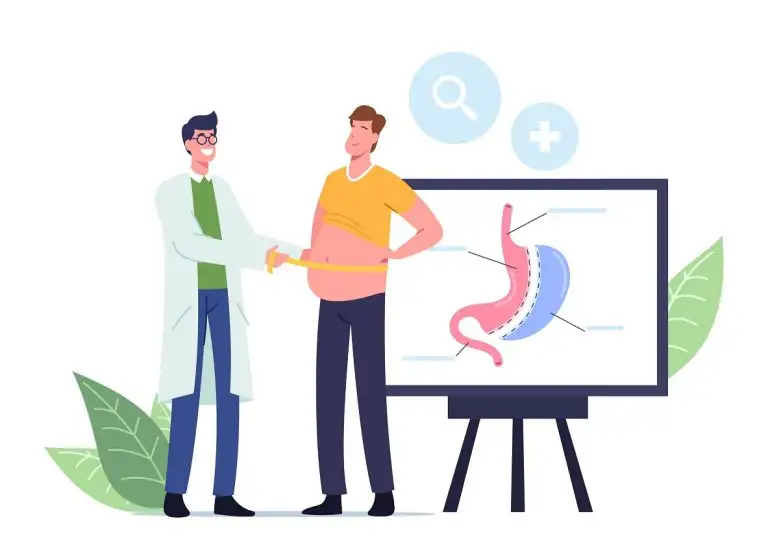
Our country has the highest rate of diabetes among obese people. Obesity is also linked to an increase in metabolic diseases. Obesity itself is scientifically a disease and it affects one’s life in many adverse ways. Obesity can lead to heart attack, brain stroke, high blood pressure, thyroid disease, arthritis, liver disease, and spinal disorders along with diabetes. Obesity is the burden of extra weight on the body! We must first realize that this weight affects various organs in our body and their function. When the ratio of body weight to height (BMI) goes beyond ‘30 kg / m2 ’, this weight creates an extra load for the body with serious side effects. These include pressure on the heart, pressure on the joints and spinal cord, and extra stress on the heart, kidneys, and lungs. At the same time, you should keep in mind that obesity creates hormone imbalance too, further reducing the body’s capacity to digest sugar and increasing the intensity of diabetes, such patients later need insulin doses. One of the positive aspects of all these ailments is that as we lose weight, all these ailments can be cured and we can balance the metabolism once again. Now the question arises how to reduce obesity? Many methods and options for weight loss are available everywhere, most methods are unscientific and have adverse effects on the body. With diet planning and exercises if this extra weight is not shredded then “bariatric surgery” is the last option you have to lose this weight and there is a need to spread awareness in the society about it. What is bariatric surgery? Bariatric surgery was started about 70 years ago. Initially, the surgery was performed to reduce the extra weight in obese people. However, later it also showed that diabetes was controlled in most patients with this surgery. A number of studies and research conducted in this regard since 2004 have concluded that among 80 to 90 percent of diabetic people with obesity, Experiencing well-being after the diabetic surgery. The intensity of the disease is less, which means that blood sugar levels remain normal with/without very few medications. Research has also shown that intestinal hormones such as ‘Incretin’ cause type 2 diabetes, and bariatric surgery can affect this hormone and control type 2 diabetes. The American Diabetic Association also acknowledges that bariatric surgery in obese individuals can cure diabetes completely, and they recommend this surgery. What is special is that, due to the advancement of technology and expert skills, “bariatric surgery” is now also performed through laparoscopy, so that there is no major incision on the body, not more bleeding, recovery is faster and the patient starts the routine early. Methods such as gastric bypass, mini-gastric bypass, and sleeve gastrectomy are prevalent in bariatric surgery. The right choice is made by a surgeon based on the patient’s condition. Bariatric surgery is the process of making positive changes in your digestive system, it reduces a patient’s appetite or ability to absorb nutrients, and in some cases both, resulting in rapid weight loss. Reducing obesity also helps in controlling diabetes and reduce or permanently stop doses of insulin and other medication. Advanced Center for Bariatric Surgery! Wockhardt Hospitals Nashik is the only hospital in North Maharashtra where “bariatric surgery” is performed. After scientific training in gastrointestinal surgeries, Dr. Sandeep Sabnis emerged as an expert in the field of bariatric surgery. Patients from Nashik and North Maharashtra have benefited from his expertise. Earlier, patients from Nashik used to reach Mumbai or Pune for this surgery, but now, breaking this equation, Dr. Sandeep Sabnis is treating obese patients in Nashik itself. Wockhardt Hospitals Nashik has assured that this will definitely benefit diabetic patients as well as those who want to reduce obesity. Dr. Sandeep Sabnis is the only certified Surgical Gastroenterologist in North Maharashtra and a renowned bariatric surgeon. Contact for appointment: 8669998256/8669998260
Facial Nerve Paralysis Cases on Rising in Post-Covid Patients
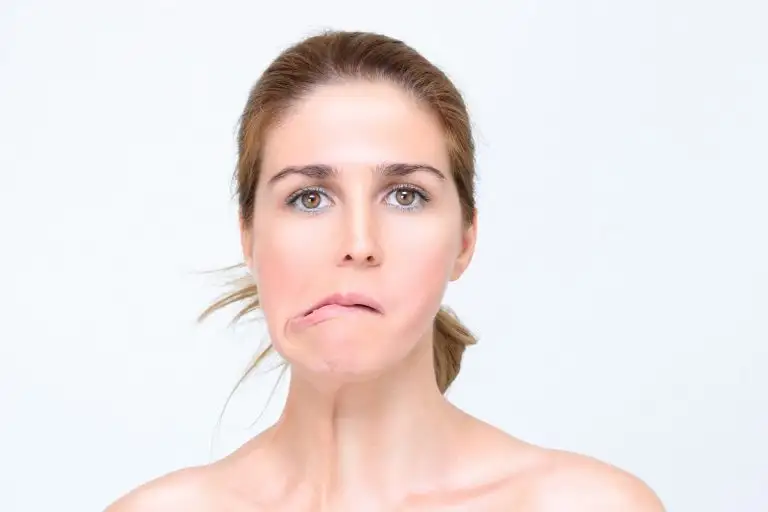
Coronavirus has been linked to severe neurological complications like brain fog, encephalitis, and even meningitis. Now, it is also causing temporary facial paralysis or Bell’s palsy in patients, doctors say. “Since last year, there is a drastic increase in the number of Bell’s palsy cases coming to the physiotherapy department, particularly patients with a history of covid-19 infection. In the last few months, around 3-4 post-Covid patients, both young and old, are appearing with this problem on a daily basis. Before Covid, we used to see such cases appearing very rarely, 1-2 cases in a month. Even asymptomatic patients who have recovered from Covid can suffer from Bell’s palsy,” said Dr. Vinith Karanth. According to experts, earlier, many Covid patients, after getting discharged, reported neurological complications like Guillain Barre Syndrome, dementia, meningitis, encephalitis, and even mucormycosis, a rare fungal infection. Now, Covid is also being associated with Bell’s palsy or facial palsy, a facial nerve disorder. What is the Condition All About? As per Dr. Karanth, Bell’s palsy is the sudden weakness in the muscles on one-half of the face due to facial nerve inflammation owing to the viral infection. “The facial nerve controls the action of facial muscles, and in Bell’s palsy, it stops sending signals to the muscles which lead to paralysis/weakness on a temporary basis and can affect either side. This can be due to impaired immunity commonly seen in patients post-covid,” he said. Symptoms Dr. Pavan Pai, neurologist, Wockhardt Hospital, Mira Road noted how complication strikes as the “peripheral portion of the facial nerve get affected”. “One has facial droop, sensitivity to loud noise, and cannot close his/her eye on the affected side. Bell’s palsy is a temporary paralysis that is triggered due to the inflammation in facial nerves,” he described. Bell’s palsy, which can crop up “even after 1-2 months of recovery from Covid”, includes symptoms like weakness on one side of the face, drooping of the mouth, facial pain, loss of taste, difficulty with speech, difficulty in eating and chewing food, eyes cannot close completely and one can suffer from eye infections because of that, explained Dr. Karanth. Treatment There are two types of paralysis — upper motor neuron paralysis related to the brain and spinal cord, and lower motor neuron paralysis which is linked to the peripheral nerves. “Bell’s palsy is the lower motor type of paralysis. So, if one feels any weakness they should visit a neurologist who will help with the correct diagnosis and a treatment plan with medicines and physiotherapy,” mentioned Dr. Karanth. Along with the medical management of steroids and antivirals, physiotherapy management which includes stimulation of the facial nerve with therapeutic currents and facial exercises helps in “faster recovery”. “Facial nerve stimulation helps to restore the muscle tone of the flabby facial muscles. Early diagnosis and timely intervention are essential to managing this condition promptly,” said Dr. Karanth. Doctors warn against delayed treatment. “Even those Covid patients who are asymptomatic can suffer from this condition. So, be careful, and stay healthy,” said Dr. Rajratan Sadawarte.
Nickelodeon is Back with its Surakshabandhan Campaign
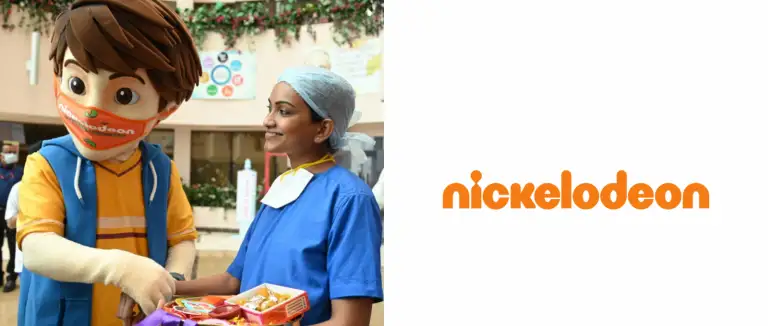
The Nickelodeon franchise entertains millions of young fans across India and continues to inculcate the right values in kids by breaking stereotypes and redefining norms through their shows and initiatives. Being a pioneer in bringing alive the true spirit of Raksha Bandhan, the country’s leading kids’ entertainment channel is back with its iconic Surakshabandhan campaign. A few days ahead of the festival, in an effort to pay tribute to the medical personnel and show gratitude, Nickelodeon joined hands with Slam Out Loud, a Delhi-based not-for-profit organization to curate DIY Nickelodeon-themed rakhis for the healthcare workers and recognize their selfless service. As part of the initiative, Slam Out Loud, an organization that uses the power of arts to build creative confidence amongst children from disadvantaged communities, conducted a 1-hour workshop with 40 kids from Swadhar (Pune) to make their favorite Nicktoon-themed handmade rakhis. The kids also wrote heart-warming gratitude notes and cards for the medical personnel thanking them for their work and praying for their safety. Nicktoons Shiva and Rudra became the messengers of ‘thank you’ and tied rakhis to the medical staff at Wockhardt Hospitals to show love, respect, and gratitude. Through this initiative, Nickelodeon set out to create awareness amongst children on the selfless efforts of healthcare workers and how they have been pushing the envelope to keep everybody safe and protected. The doctors and nurses who received the rakhis were really touched by the gesture. Dr Parag Rindani, Regional Head, Wockhardt Hospital said, “We are glad to associate with Nickelodeon to tie Rakhi – a band of Suraksha to our doctors and the clinical staff for their remarkable contribution during these trying times and to celebrate the true spirit of “Surakshabandhan” during the ongoing pandemic. We hope that this activity will relieve stress, fear and divert the attention of our Doctors and medical staff who are protecting us ever since the pandemic hit us.” The initiative will be promoted on digital media and through a robust program of mommy networks and influencers who will amplify the reach to audiences at large. Moreover, the initiative will be brought to life on social media through engaging content and contests for kids encouraging them to share pictures of their DIY rakhis. Additionally, the brand is imploring kids to create a chain of messages for the medical personnel and curate the longest rakhi message using social media features. In 2017, Nickelodeon celebrated Surakshabandhan with India’s elite Border Security Force (BSF) at Wagah Border, wherein children along with their favorite toons Dora and Shiva tied the symbolic Rakhi to the soldiers at the iconic retreat ceremony, thus saluting their selflessness, bravery, and relentless commitment to the country. Source: https://www.4psnews.com/brands/story/nickelodeon-is-back-with-its-surakshabandhan-campaign-gives-a-heartwarming-tribute-to-medical-personnel-at-wockhardt-hospital-sobo
Let’s Break the Barriers

Several women suffer in silence, the discomfort, and embarrassment related to stress urinary incontinence (SUI), vaginal laxity, and the associated sexual dysfunction. They do not seek treatment, either out of ignorance or out of embarrassment, and suffer silently. The barriers of communication about these rampantly common but less spoken of issues in women need to be broken. There have been developed in aesthetic and functional gynecology which are proving to be boons for these fairly common complaints in women. TTCRF (Transcutaneous Temperature Controlled Radio Frequency) energy source can be used to treat these ailments in most women. This is a novel, absolutely noninvasive modality of therapy that requires no hospitalization, no anesthesia, and no incision and can be done in an OPD setup. The patient’s own tissues are given a targeted RF energy thereby triggering regeneration of collagen tissue and improving the blood supply in the local native tissue. This is like strengthening the patient’s own tissues to function optimally as earlier, instead of making a tape/sling or surgical sutures to do the job. The common ailment that can be addressed and cured by using this modality are- SUI (Stress Urinary incontinence) What Does the Procedure Involve? It involves a simple OPD setup procedure wherein the patient is given transcutaneous temperative controlled RF energy by specialized vaginal probes attached to a highly advanced RF energy source for a specified time. In around 30 minutes, the patient walks out of the chamber. Are There Any Post-Procedure Problems? The procedure has absolutely no downtime and the patient gets back to work the moment she walks out of the hospital. It is possible to resume sexual activity within 72 hours and there is no restriction to activities like swimming or tub bath. How Does this Work? The temperature-controlled RF energy triggers the regeneration of new collagen tissue which strengthens the native tissues in the vagina. It also increases the local blood supply giving additional support and strength to the vaginal lining. This in turn provides the original robust support to the urinary tract which lies in close proximity to the female reproductive tract. It thus deals with incontinence of urine which arose due to loss of support by native tissues. By increasing the blood supply to the vaginal lining, it improves the sexual satisfaction score It also, by the same mechanism, improves the integrity of the urogenital tract, thereby reducing the incidence of recurrent UTI drastically. Let’s encourage our women to speak out about these health issues and help them to overcome them in a simple and absolutely painful way. Let’s, in a real sense, empower our women and allow them to enjoy the new ‘20s’ in their ‘40s’!!
Health Check Up Camp for Central Jail Prisoners
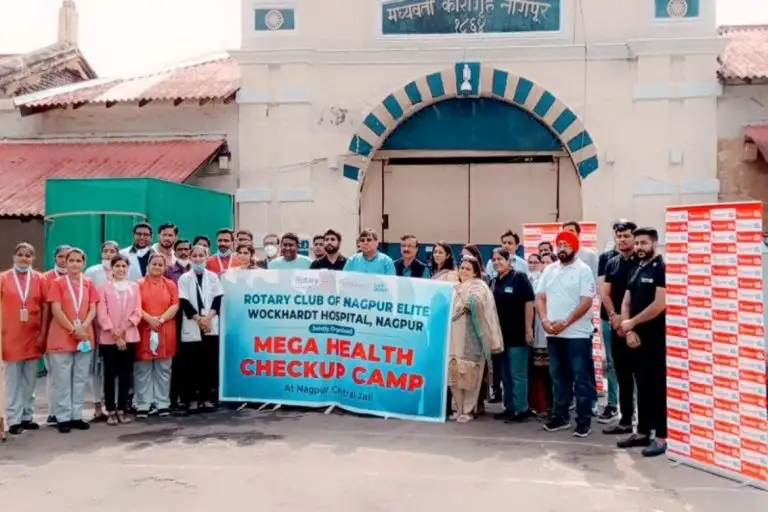
A free health check-up camp for central jail prisoners was organized by Wockhardt Hospitals, Nagpur, and Rotary Club Elite. The camp was held on 8th August to ensure proper health monitoring of the prisoners. In the camp around 2000 inmates were screened by specialist consultants. All prisoners received services from dermatology, physician, and physiotherapy departments. After the Health Check-Up, the required medications were also provided to the inmates free of cost. Talking about the camp, It has been conducted in presence of Mr. Ajay Patil, Chairman- Rotary Club Elite, Mr.Shubhankar Patil President Rotary Club Elite under the observation of Mr.Kumare Police Superintendent Central Jail Nagpur. Mr. Abhinandan Dastenavar, Centre Head, Wockhardt Hospitals in Nagpur said that _” Wockhardt Hospitals do believe in conducting CSR activities and always wish to associate with Rotary Club to add value in noble activities and to fulfill the social responsibilities”. Also, Dr.Vaibhav Agrawal said that “In this pandemic and infectious environment its important to take such camps to screen the patients and it’s our pride that Wockhardt hospitals always lead in such CSR activities. Wockhardt successfully conducted this activity with an expert team of medical officers, nursing staff, pharmacists, etc. The camp was organized keeping into consideration the fact that prisons have health services, but new treatments and investigations may be needed with the change of time. Source: https://thelivenagpur.com/2021/08/10/wockhardt-hospital-and-rotary-club-elite-organize-health-check-up-camp-for-central-jail-prisoners/
Tired of long working hours? Here’s how to manage your heart health

Various reports and studies have confirmed that people who work for long hours are at a higher risk of cardiovascular disease. People who have been working from home in the last 16 months of the pandemic have been putting in much more hours than they would if they were at the office premises. And heart specialists say that these long hours of non-stop work can put pressure on one’s heart inviting a heart attack. Dr Narayan Gadkar, consultant cardiologist from Zen Multispecialty Hospital says, “You will be shocked to know that working at least 55 hours per week is linked to a higher risk of both ischemic heart disease and stroke when compared to those people who work for around 35-40 hours a week. Working long hours can increase mortality and morbidity from ischemic heart disease and stroke via psychosocial stress.”With the lockdown slowly being lifted and people started to going to work in offices is another reason for longer work hours. Some are working for more than 14 to 15 hours a day, are always glued to chairs in offices or at home and fail to get that much-needed break. Dr Bipeenchandra Bhamre, cardiovascular surgeon, Sir H N Reliance Hospital, and Lilavati hospital, says, “All this should be a strict no-no as doing so can take a toll on your heart. We are not kidding here. Working for longer hours invites various health risks along with heart problems. The people who already have risk factors like hypertension and diabetes and high cholesterol may develop ischemic heart disease, heart attacks, strokes, and heart rhythm problems owing to extended working hours.” Dr. Anup Taksande, consultant interventional cardiologist, Wockhardt Hospitals, Mira Road says, “People with hypertension and diabetes and high cholesterol are at a higher risk of developing ischemic heart disease, heart attacks, strokes, and heart rhythm problems because of erratic and long working hours. It is the need of the hour to keep heart disease at bay and adhere to a healthy lifestyle.” DOCTORS SHARE SOME HEART-FRIENDLY TIPS THAT YOU NEED TO FOLLOW… Don’t ignore check-ups and telemedicine In these times, staying in touch with your doctor through video consultation or calls or even WhatsApp is needed. Regular check-ups are essential. Make use of technology to avoid delays if you have any health issues. Manage your cholesterol levels Do not eat processed or deep-fried foods that can lead to abnormal cholesterol levels. Cholesterol is one of the potential causes of heart disease. Hence, it is the need of the hour to check on your cholesterol levels. Stick to a schedule You will have to follow a proper routine, every day. Slot time for your exercise. Stick to your diet chart. Maintain a good sleep routine of seven to eight hours a day. Try to take out some time for yourself. Stay physically active This is super essential! Just walking for 40 minutes every day has been shown to improve heart health. So if you can swim or run or do bicycling it’s great for your heart. If you are already a heart patient then don’t go overboard while exercising. Just keep moving at home, maybe walking or even doing aerobics in order to increase blood circulation. Do it after speaking to the doctor. Take medication as prescribed by your doctor If you are on high blood pressure medications or diabetes medications take them on time. Don’t miss your doses. REMEMBER TO CHOOSE HEART-FRIENDLY FOODS Opt for foods that enhance your immunity, say doctors. Eat a well-balanced diet that includes all the essential nutrients and minerals. Have foods with a lot of green vegetables and fruits, for non-vegetarians once in a week chicken and fish is fine. Food like walnuts, beans, flax seeds, avocado, berries, nuts, carrots, sweet potatoes, capsicum, spinach, asparagus, tomatoes, broccoli, oranges, nuts, and papaya are great. Avoid eating spicy, oily, canned, salty, and sugary foods that have artificial sweeteners and a lot of salt. Eliminate carbonated drinks from the diet. Reduce alcohol consumption and quit smoking or using tobacco in any form, as doing so can take a toll on your heart. FACTORS BEHIND HEART DISEASE: Source: https://timesofindia.indiatimes.com/life-style/health-fitness/health-news/tired-of-long-working-hours-heres-how-to-manage-your-heart-health/articleshow/85059379.cms
Patient’s Safety Week
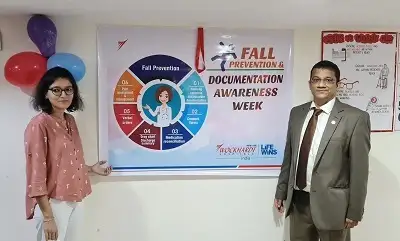
Wockhardt Hospitals, a reputed chain of tertiary care super-specialty hospitals in India observed Patient Safety Week with the theme “Fall Safety and Documentation Awareness Week”, across Western India at all its facilities at Nagpur, Rajkot, Mumbai & Mira Road. Patient safety is fundamental to delivering quality health services. The practices are aimed at strengthening the regular process to achieve better patient care and safety. The Group-wide program on Patient Safety Week from 3rd to 5th August was inaugurated by Ms. Zahabiya Khorakiwala, Managing Director, Wockhardt Hospitals Ltd. Commenting on the initiative, Ms. Khorakiwala said, “Prevention is always better than cure. It is mandatory that healthcare institutions implement these practices and adhere to them to ensure quality care and patient safety. At Wockhardt Hospitals, we believe in delivering quality care.”The three-day program witnessed wide range of activities covering the topics of Accurate & Complete Documentation of Medical Records, Fire Safety etc. Dr. Clive Fernandes, Group Clinical Director, Wockhardt Group Hospitals, said, “At Wockhardt Hospitals, we have always believed in patient safety first, Quality healthcare always has to be delivered keeping patient safety in mind. At Wockhardt Hospitals we regularly conduct such awareness programme that helps us to reinforce all our defined protocols. This program is focusing on complete documentation in the medical record as I firmly believe “Every entry matters.” Source: https://www.konexionetwork.com/NewsDetails.aspx?newsid=8d9655de-0ef8-413a-a082-79ad93900de5






